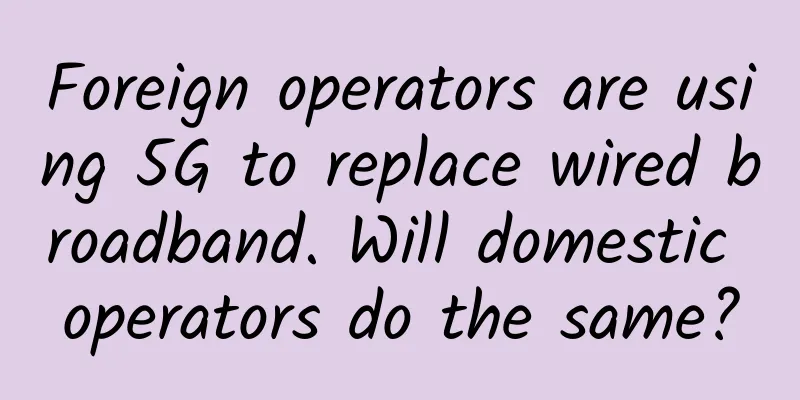Why are operators trying so hard to promote 5G packages?

|
In July last year, an article on Xinhua Online said that the number of operators' 5G package users was 50 million more than the total number of 5G mobile phones, questioning whether the operators were forcing growth. By June this year, according to the latest data from the China Academy of Information and Communications Technology, the cumulative shipments of 5G mobile phones in the Chinese market since 2019 were 304 million units. At the same time, the three major operators announced a total of 495 million 5G package users. There are nearly 200 million more 5G users than 5G phones, and this does not include those who are using 5G phones but are still using 4G packages. But even so, the three major operators still feel that too few people use 5G. At the end of August, Li Xiaolong, vice president of Huawei's mobile phone product line, said on Weibo that the cancellation of the 5G pull-down quick switch in the Hongmeng system is a unified requirement of the three major operators. The so-called quick switch refers to an option that appears after swiping down the mobile phone desktop, which can quickly turn on and off the 5G network. This is an old tradition of domestic mobile phones. There was also a 4G switch in the 4G era, but recently various new systems have removed this 5G shortcut key. This operation forces you to use 5G more, and it will be very troublesome to turn off 5G. When thinking about the rumors of 4G speed reduction that were once widely circulated, it further deepened the stereotype among ordinary users that operators are the big villains. But who doesn't want to make money without doing anything? The three major operators who seem to have great connections and can exploit the people in the village also have their own problems at home. As of June this year, China Mobile has opened 501,000 5G base stations. Together with China Unicom and China Telecom, the three major operators have built 961,000 5G base stations in China. How far is this number from full 5G coverage? When 4G construction was basically saturated at the end of 2019, there were about 5.44 million 4G base stations in China. The signal coverage of 5G base stations is relatively small compared with that of 4G base stations, so some industry insiders believe that the number of 5G base stations should be 4-5 times that of 4G, that is, tens of millions. It is generally believed that the construction cost of a single 5G base station is about 160,000 yuan. China Mobile invested about 102.5 billion yuan in 5G in 2020, and another 50.2 billion yuan in the first half of this year. You can roughly calculate how much more money the operator will continue to invest. And it’s not just the construction of base stations that is burning money. Just like your 5G mobile phone consumes more power than 4G, the current power consumption of 5G base stations is about three times that of 4G base stations. When 5G base stations are initially built, if the number of users does not increase, the extra electricity bill will be wasted. Therefore, in order to quickly increase the number of users, in addition to allowing all 5G mobile phone users to use 5G packages, operators are also targeting 4G mobile phone users. On the one hand, they expanded their sales network and promoted the product frantically online and offline, saying that 4G mobile phones can also use 5G packages and have faster Internet speeds. On the other hand, 5G packages of the same price are designed to have larger data packages in order to attract 4G users to upgrade. Even without using the 5G network, they can get more data, so many 4G mobile phones are using 5G packages without knowing it. But these actions alone cannot solve all the operators' troubles. Currently, the 5G user penetration rates of China Unicom and China Telecom have exceeded 36%, and the penetration rate of China Mobile, which has a larger base, has also exceeded 26%. It is not bad to achieve this result in two years. But the problem is that the operators found through the backend that the length of time 5G mobile phones stay on the 5G network and the traffic generated did not meet expectations. In other words, a large number of users turned off 5G and used 4G. The problem caused by this phenomenon is not just that the operators make less money. Last year, according to the Ministry of Industry and Information Technology's document, the three major operators began to re-cultivate some 4G frequency bands for 5G, while clearing some 2G and 3G frequency bands. This can both speed up 5G construction and not affect the use of ordinary users. However, in actual operation, it was found that since a large number of users are still using 4G, operators are unable to give some inefficient 4G frequencies to 5G. In addition, 4G is under high load and no one uses 5G, but the priority of 4G network construction is currently behind 5G. This is also one of the important reasons why some users feel that 4G has become slower. So it is understandable why operators would be so embarrassed to ask mobile phone manufacturers to cancel the 5G quick switch. Then the question is, can't operators slow down the speed of 5G construction? It really can't work. According to the "5G Application "Sailing" Action Plan (2021-2023)" issued this year, by 2023, the penetration rate of 5G individual users will exceed 40%, the number of users will exceed 560 million, and the proportion of 5G network access traffic will exceed 50%. This is like tying a knot after another when tying shoelaces, and in the end, all of them are knots that cannot be untied. From users to operators, it seems that everyone has suffered losses, and no one is satisfied. But every deadlock has a way out. As an ordinary consumer, when I upgraded to 3G, I clearly felt the improvement in the smartphone experience. After switching to 4G, I can finally watch videos smoothly even without WiFi. But after almost two years of using 5G, I personally haven't felt any significant difference from 4G, except that the speeds for downloading apps and playing games have been much faster. I no longer feel the excitement of running to many places to test the 5G speed when I first saw the 5G signal. The breakthrough point in the 5G era may be autonomous driving, the Internet of Everything, or applications that you and I cannot imagine now. But in short, it should be driven by the application experience, rather than coaxing and deceiving users into signing up for 5G packages with their 4G phones. You may have seen a joke in which a teller in a carrier's business hall told an old man that he could dance square dance with his old lady after upgrading to 5G. Whether the joke is true or not, we hope that it will never happen in reality. Finally, the wild growth of 4G applications has been a driving force for Chinese companies to participate in the formulation of communication industry standards in the 4G era. In the 5G era, China has taken the lead in standard formulation and network construction. We are willing to believe that the future 5G killer applications will first appear and become popular in China. But at this stage, compared to these cool promotional videos, we hope that 5G is really easy to use and can change the lives of ordinary people. This is the driving force for us to buy 5G mobile phones and use 5G packages. |
<<: AI technology trends that matter to businesses
Recommend
Building 5G and expanding 4G: 2G/3G network withdrawal is underway around the world
[[388835]] The COVID-19 pandemic has driven deman...
DiyVM: US CN2/Hong Kong CN2/Japan Osaka VPS monthly payment starts from 50 yuan, Hong Kong server starts from 499 yuan/month
DiyVM is a Chinese hosting company founded in 200...
5G penetrates into the B-end market and promotes the digital transformation of the industry
The core of 5G technology lies in the development...
Riverbed Launches Industry's Most Comprehensive Digital Experience Management Solution
Recently, Riverbed Technology announced the launc...
CMIVPS: Hong Kong high-bandwidth KVM 30% off, three-network direct connection, Hong Kong/US independent servers online
CMIVPS is a Chinese VPS service provider, providi...
The rapid development of 5G technology brings more innovative applications to the automotive industry
Industry experts point out that in order to meet ...
OpLink: Houston 1Gbps unlimited traffic high-security VPS starting at $1 for the first month
Tribe has shared information about OpLink twice i...
Qorvo Announces Increased RF Fusion20TM Module Availability
[[390846]] Qorvo, a supplier of RF solutions for ...
Q1 global switching and routing equipment market size is $9.1 billion: the lowest point in seven years
According to the latest data from US market resea...
How does a router choose a more appropriate path among many routing protocols, manual configurations, and routing policies?
Routers are important network devices that realiz...
Network security knowledge: View the user license agreement
It is very necessary to understand the user licen...
What else to look forward to in the communications industry in 2021?
[[373658]] This article is reprinted from the WeC...
RAKsmart: 20% off on cluster servers starting from $113/month, 258 IPs with 1C/2C/4C/8C options, San Jose/Los Angeles/Hong Kong/Korea/Japan data centers
Many friends have the demand for multi-IP cluster...
China Unicom expects the number of 5G base stations to reach 700,000 by the end of this year
China Unicom recently released its financial resu...
5G+AR ushering in a new "blue ocean"
[[408334]] In recent years, the development of te...









